This summer my son turns 25 years old. When he was a toddler and we looked endlessly without success for accessible places to play, I never imagined that today the City of Pittsburgh would have accessible swing seats in 91 playgrounds and six wheelchair accessible swings in additional playgrounds. I never imagined that there would be serious conversations about the importance of including adult changing tables in playground restrooms. I would never have imagined that the directory of accessible and/or inclusive playgrounds on accesibleplayground.net would exceed 1200 listings in North America. (I’m sure the number is actually much greater than this, and I encourage people who know of accessible and/or inclusive playgrounds to visit the site and add to our collective knowledge.) Finally, I never would have imagined that the conversation would move from accessibility and ramps to a much fuller conversation about how to include all of our children in our community. Yet, here we are.

With the publication of the new guide, it seems like a good time to explore where inclusive play stands in 2019. We have certainly seen a great deal of progress in philosophy, equipment, and education. Yet, while I’m thrilled with 1,200 listings in the directory, there are close to 20,000 cities in the United States. This means that at most, only 6% of cities have a place where all children can play. We still have a long way to go to ensure that everyone has a high quality, well thought out playground designed for all children.
"I’ve been designing play areas for over 25 years, and I’m happy to see a significant increase in the play industry’s willingness to provide real play choices for all abilities and ages. Research indicates much higher attendance rates and engagement in play areas where universal design and inclusive principles are used during site analysis and conceptual plans."
Missy Benson, Inclusive Play Manager and Play Advocate, PlayPower
Philosophy
When I first started working in this industry, the primary conversations were about the surfacing and “ramps to nowhere.” We’ve come a long way since then. Surfacing remains a top conversation because of its impact on the true accessibility and budget of a project. On the other hand, I can’t remember the last time I discussed ramps to nowhere. Now the discussion focuses on how high ramps should go or if they should even be included in the first place. We no longer discuss the deficit of the child and their inability to do things; instead, we discuss how the lack of inclusion lies with poorly designed environments.
The Inclusive Play Design Guide highlights eight keys to inclusion:
- Use unitary surfacing
- Contain the playground with a fence
- Incorporate six out of seven sensory systems
- Provide opportunities for solitary, parallel, associative and cooperative play
- Provide a range challenge
- Group like equipment into zones
- Have a detailed conversation about the importance of elevated play and how you are going to obtain it
- Ensure there is plenty of space for people to maneuver through the playground
While we have talked about some of these concepts for the last 10 or even 20 years, a few are fairly new. They have only been recently added to the conversation as we move away from fighting for the concept of inclusion and towards its implementation and achievement.
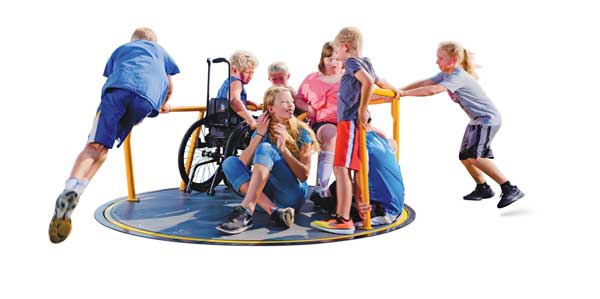
Two new intents that were added to the Design Guide address where current conversations are.
The first one tackles providing choices on the playground. We now recognize that on the best inclusive playgrounds, not every child will play on everything. There will be pieces that will be too easy, pieces that are too hard, pieces that some people love, and pieces some don’t like as much. Every child that comes to the playground should have a choice about where and how they want to play.
An eight-year-old with autism, who loves to climb and jump, but gets queasy with vestibular motion, should have multiple opportunities to challenge him or herself on climbing apparatuses alongside their typically developing peers. The child who uses a wheelchair and cannot transfer out of it should be able to go on gliders, ramps to slides, utilize musical instruments and spin on merry-go-rounds, all alongside their typically developing peers.
What this intent is saying is that no one should be bored when coming to an inclusive playground. Typically developing children should have many choices that are challenging and fun to them, just as a child using a wheelchair should have a lot of choices that are challenging and fun to them. If either group decides the playground isn’t a good place to play, we start to lose the social engagement that makes up inclusion.
The second new intent focuses on engaging people of all ages and sizes. We know that when we build an excellent inclusive playground, it won’t just be for children 2–12. There will be infants, teens, parents, and grandparents of all sizes and abilities. A true community playground finds innovative ways to engage everyone. We are starting to see swings of diverse sizes so people of all ages can swing. Water and sand can bring people of different age groups together in a spectacular way. Electronic games that are fun for different ages enhance playgrounds, as the games can be programmed for a broad spectrum of challenges and are accessible to those who use mobility devices.
Since 2012, I have been preaching that we should use fewer ramps and include more ground-based play components. I believe that there is more play value for more children when we don’t spend money and space on ramps. We’ve seen some major inclusive destination playgrounds move to this philosophy. Playgrounds like Magical Bridge in Palo Alto and Helen Diller Playground in San Francisco are two that use embankment slides to create elevated play activities instead of ramps with post and deck.
Shane’s Inspiration and Unlimited Play, two of the leading nonprofits that help build inclusive playgrounds, design playgrounds that are a combination of ramps and ground-based activities.
However, there are still too many communities that are creating a ramped structure without any ground-based activities. The ramps often don’t go up very high—only three or four feet. These structures aren’t challenging or interesting to children who are interested in climbing. They don’t offer high play value for children who use wheelchairs. The child going up a ramp can play with play panels on the route and possibly go down a slide if they can transfer out of their chair. Once going down the slide, they are at the bottom, but their means for moving around is at the top. For the structures that add challenge by taking the ramps up 8-9’, there are safety concerns. Fionna Robbe, a leading inclusive play landscape architect, reports that they are no longer building ramps to high decks in Australia. They found that ramps enabled small children to easily reach places that weren’t designed for them, creating dangerous situations.
When we create structures with ramps that only go up to three or four feet high, then have climbers and tunnels go to the higher decks without any ground-based play, the engagement needed for inclusion is missing.
The goal for leaders in inclusive play should be to provide education on the best practices for design, including significantly reducing the number of ramps used. When communities say they want ramps, it’s the responsibility of playground sales representatives to show them alternatives and explain the difference in play value.
Communities should be encouraged to create community planning committees regardless of the size and budget of the playground. Bringing together parents, educators, therapists and people with disabilities along with the city planning and recreation people helps ensure that we move beyond ramps to playgrounds that provide the highest levels of play value for all children.
“With greater awareness of the need to exceed ADA guidelines and design play spaces for children with visible and not visible needs, the best way forward is through the lens of inclusivity. When outdoor play spaces are collaboratively designed by a team of professionals including designers, therapists and educators, with input from children and their parents, we stand the best chance of achieving outcomes that are truly inclusive."
—Amy Wagenfeld, Ph.D., OTR/L, SCEM, FAOTA
Equipment
Twenty-five years ago, there were only one or two manufacturers that addressed inclusion, and even these leaders only had accessible swing seats, accessible gliders, and ramps available.
Now almost every manufacturer addresses the issue of inclusion, and companies have dozens of choices for equipment that children of diverse abilities love to play on. Additionally, equipment that originally was only found overseas is now readily available in the United States.
Manufacturers offer a variety of equipment for both sensory seekers and sensory avoiders. Within the last year, manufacturers have come out with accessible whirls, where a child in a wheelchair can roll right on and spin with their friends. Group swings and spinners that offer postural support are another way to provide vestibular experiences. Many companies offer places for children to retreat from play as well as places to regroup. There are accessible zip lines, creative see-saws, high-quality musical instruments, and unique climbers geared toward helping communities design inclusive playgrounds.
On the other hand, there are trends in playground equipment that make inclusion more difficult. We’re seeing climbing structures go up to 12’. If the excitement of these playgrounds is the height and thrill of going down, it will be difficult to create an environment where children of differing climbing abilities can play together. Similarly, we’re seeing equipment made with rope and challenging obstacle courses which do not lend themselves to inclusion unless designers put inclusion as a goal at the beginning of the design process.
Education
Blake Hobson, the owner of Midstates Recreation and parent of a child with disabilities, contends that educating his employees and the communities he works with is the only way we’ll be able to move beyond ramps to playgrounds that include more of these innovative products. It is through education that we can convince communities to go beyond the ADA to truly create community play spaces that are environments where the whole community can play together.
To this end, Hobson requires all of his salespeople to take a six-hour course developed by Playworld on inclusive design. He encourages community leaders to take the course as well, free on Playworld’s website.
The course is divided into six modules that can be taken by a participant at his/her own pace. It’s a research-based, in-depth program that offers real-world grounding in principles based on child development and inclusive best practices. It covers:
- What an inclusive playground is and why it's important.
- The intents in the Inclusive Play Design Guide and the ability to put 38 of them into practice.
- How to put together a playground that can be certified inclusive.
- What the Americans with Disabilities Act (ADA) is and where to get more information.
- The most common childhood disabilities.
- Playground surfacing.
- How to identify products that work best in an inclusive playground and why they're good choices.
- The benefits of ground-based play and the pros and cons of ramped play.
- How different types of play benefit children.
- How to support adults with disabilities on the playground.
Other educational opportunities people can seek out include CEU courses for landscape architects and park and recreation employees offered by a variety of manufacturers, Australia’s Everyone Can Play guidelines and websites such as accessibility.net.
There are excellent TED talks online about inclusive play. Two of my favorites are:
Chad Kennedy, licensed landscape architect and designer of Awesome Spot: Exploring social and sensory barriers that impede play in public spaces
Julie Asher, co-founder of Magical Bridge: We all deserve a place to play.
Through sharing best practices, we’ll continue to push the envelope in inclusive design.
The global demand for, and innovation of, inclusive playground design and development has been truly extraordinary over the last 20 years. But what has been most thrilling to witness is the transformational understanding of the distinction between accessible and true inclusion. The most impactful aspect of this mission is working with communities as they realize that it’s not enough to simply design a play environment that’s accessible; that their deeper work begins once the playground is open and inclusive educational programming can begin. When the inclusive playground is transformed into an outdoor classroom where harmful misconceptions are replaced with a deep understanding that we are all far more similar than we are different, the path towards friendship and true belonging can unfold.
—Tiffany Harris, Inclusion Matters by Shane’s Inspiration
On-Going Programming
As Harris points out in the quotation (left), some of the most well-known playgrounds, don’t stop at putting the equipment in the ground. They offer concerts, special events, and inclusion training. To learn more about this type of programming, visit Magical Bridge, Inclusion Matters by Shane’s Inspiration, and Kids Together Playground online.
In the last 25 years, we’ve been able to explain why inclusion is important and outline strategies for design and programming. It’s now our goal to encourage every one of the 20,000 cities in the United States to commit to at least one inclusive playground in their next master plan.

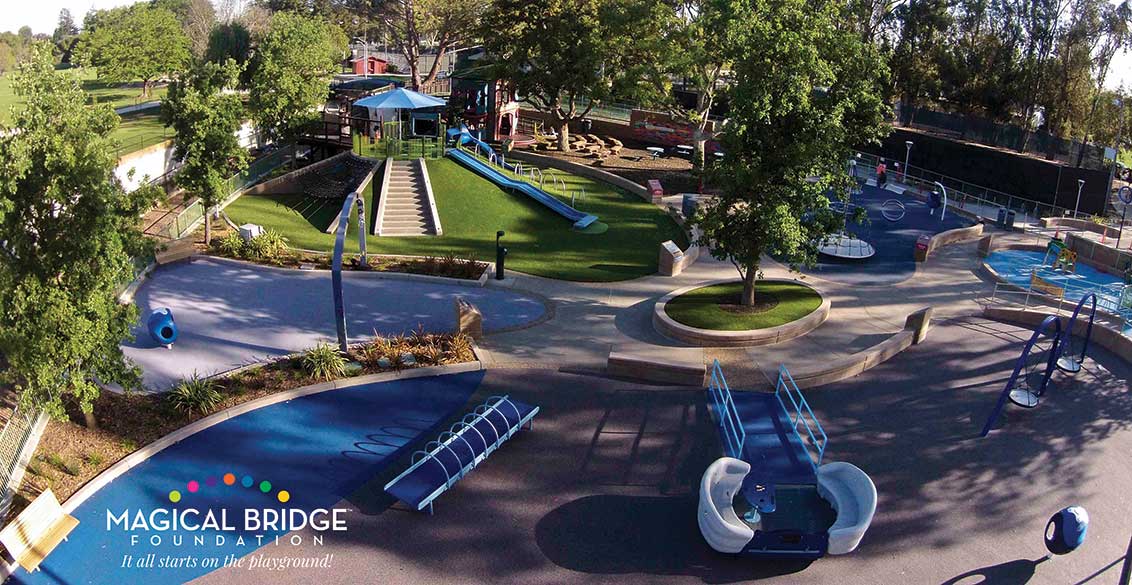

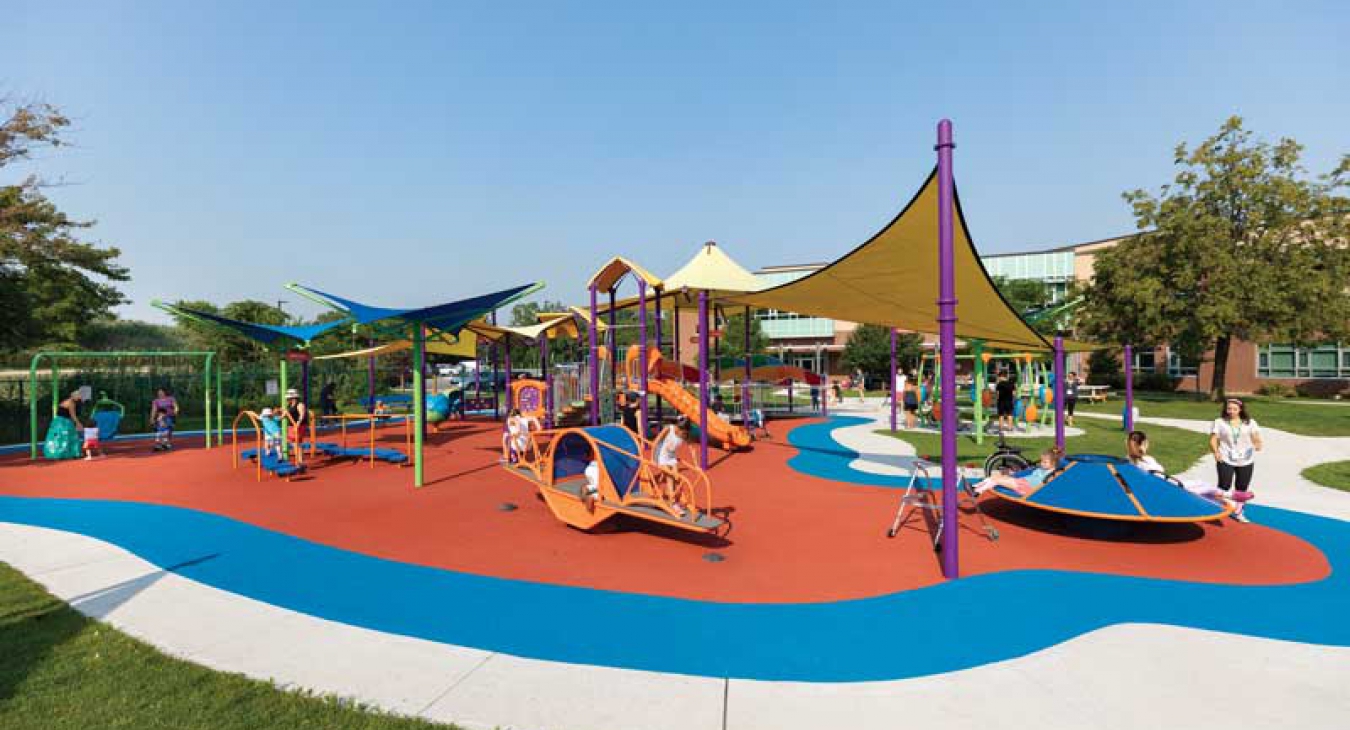
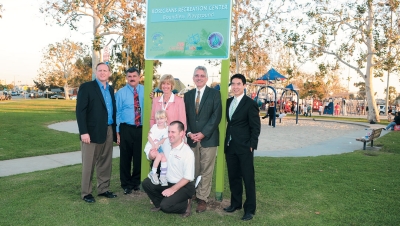
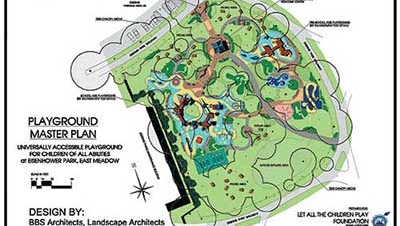
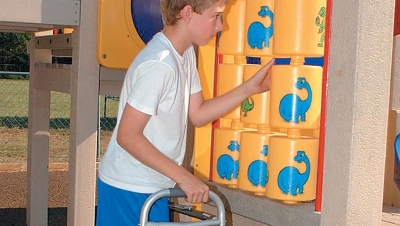



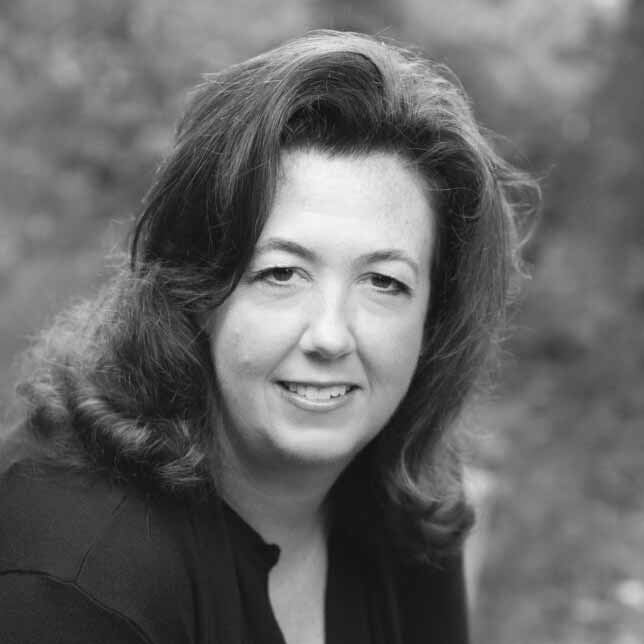
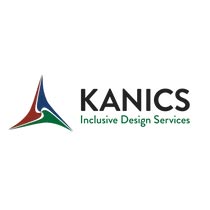
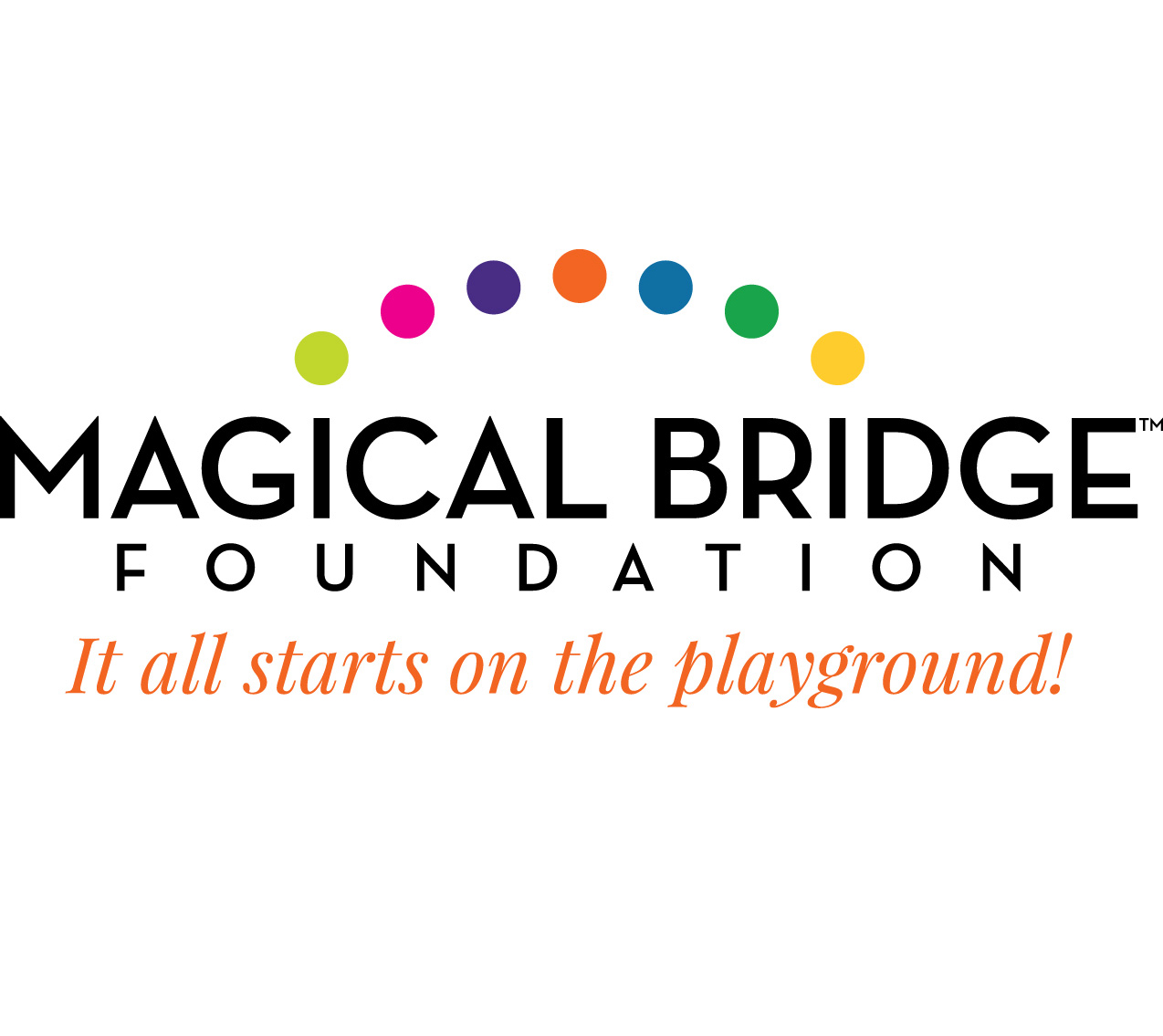

I know that Mara will be
I know that Mara will be happy to talk to you. Please reach out to her at [email protected].
Inclusive Playgrounds
Hello,
We are a group of 5th graders and 6th graders doing a project as part of the First lego league competition. We wanted to base our project on inclusive playgrounds as we are seeing less of those in our community especially in one of school districts some of us are from.
When we researched on the idea, we came across your profile and the project that you worked on for NPR. We would love to talk to you about the cause, hopefully without taking much of your valuable time. Attaching some of our preliminary findings in our community.
Looking forward to hearing from you,
Thanks and Regards
Certification
A few of playground manufacturers have developed a certification process for their playgrounds, including Miracle Recreation and Playworld. There is no universal certification for inclusive playgrounds. Let Kids Play can review your playgrounds using a series of questions we have developed based on best practices and let you know what the status is of your playgrounds. We can make suggestions of how to improve the playground so that you can comfortably say it is is inclusive. If this is something you would like to explore, please reach out to me at [email protected].
Inclusive Playground Certification
How does a playground become "certified inclusive"? What are the standards, and who does the certification? I would like to know if some of our playgrounds can be certified, or improved enough to be certified.
Add new comment